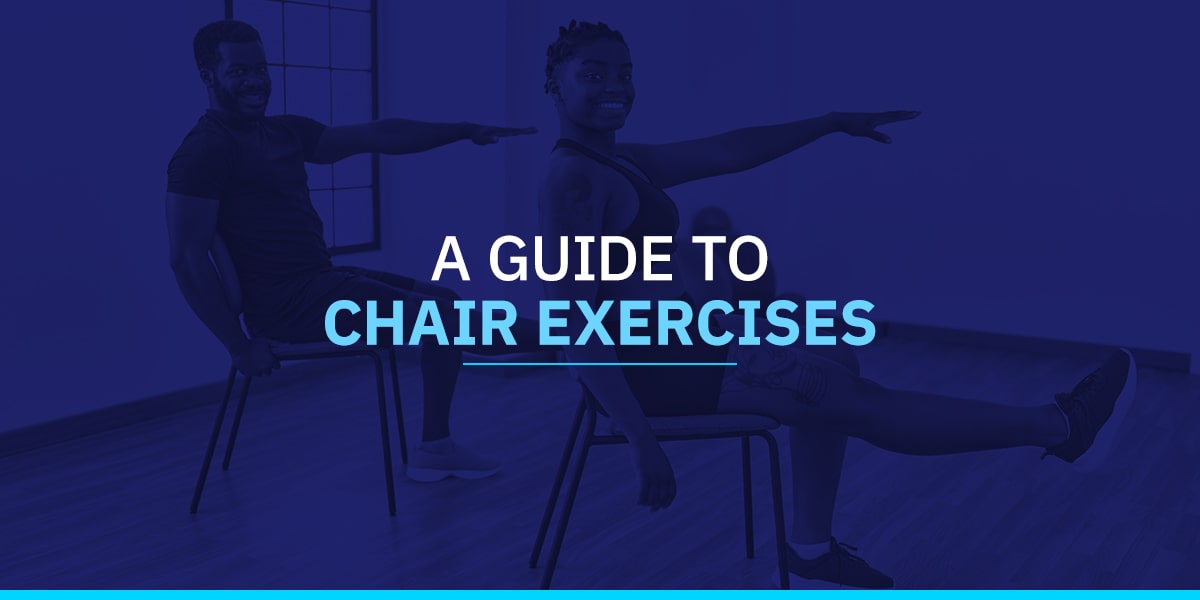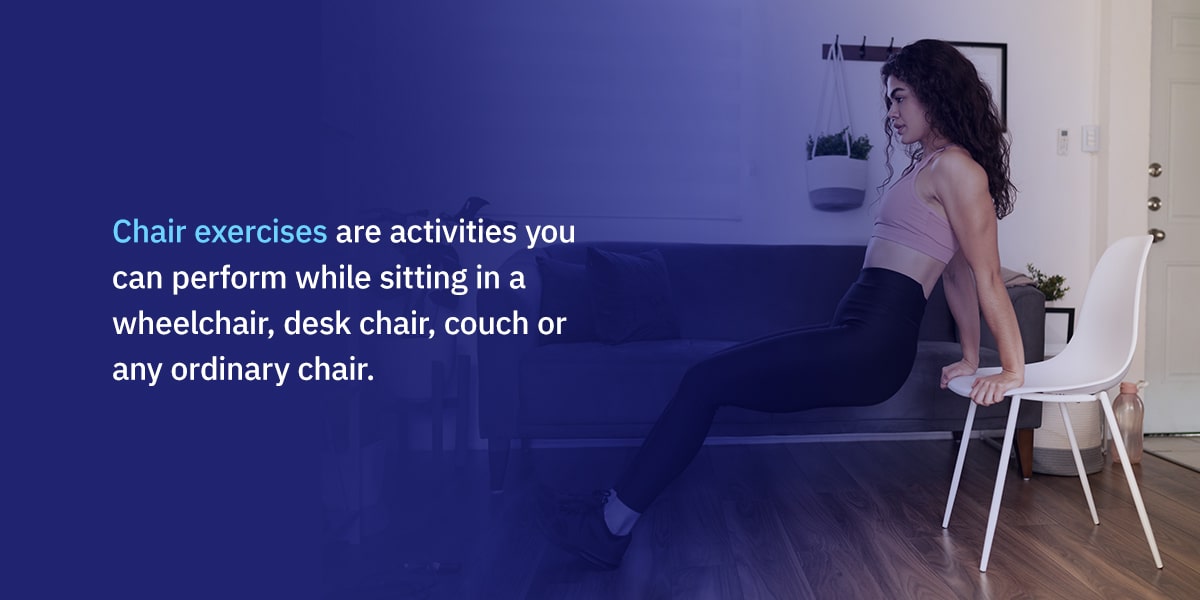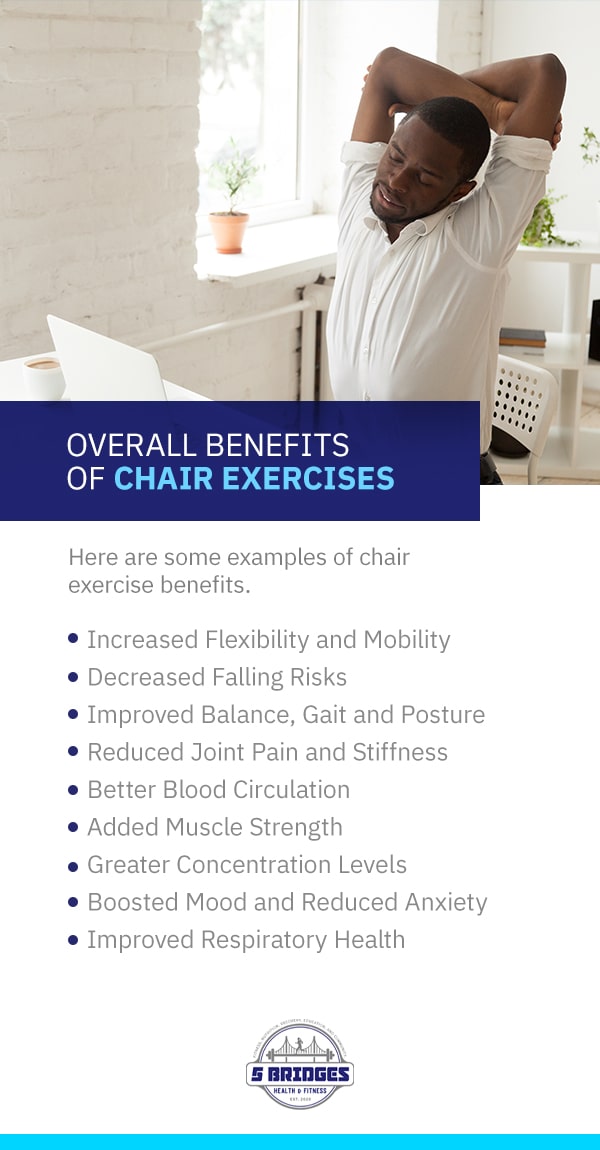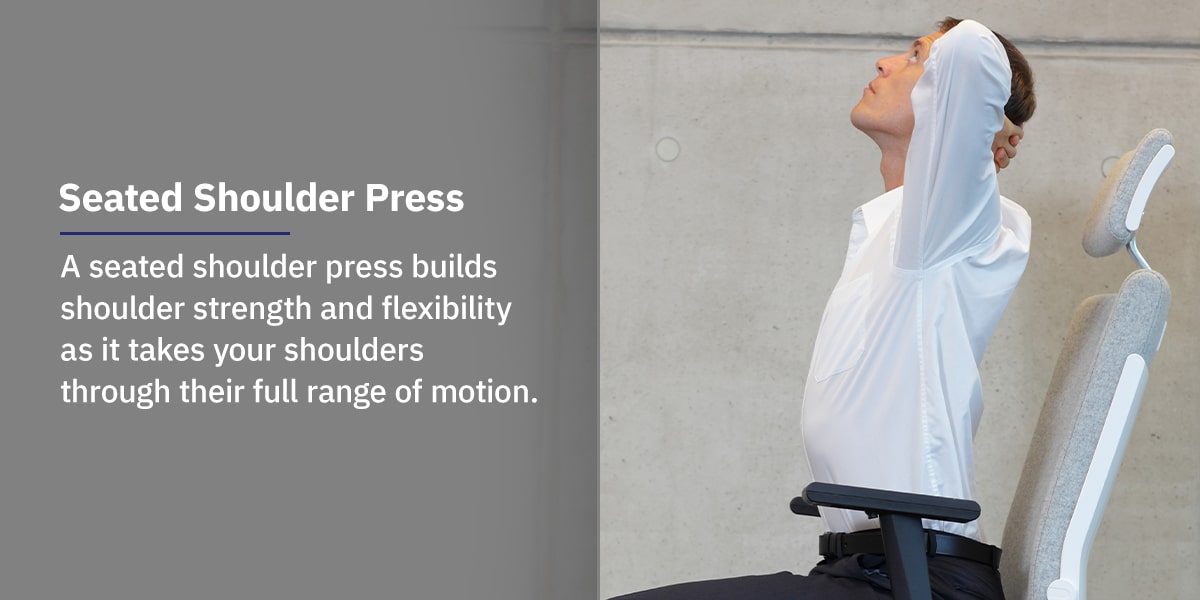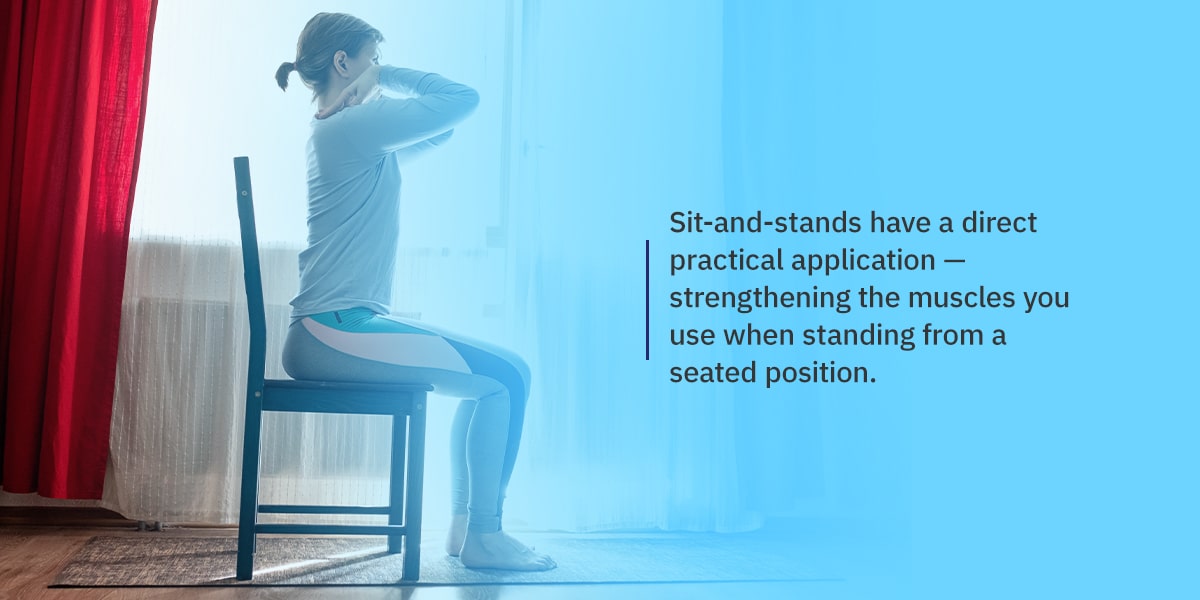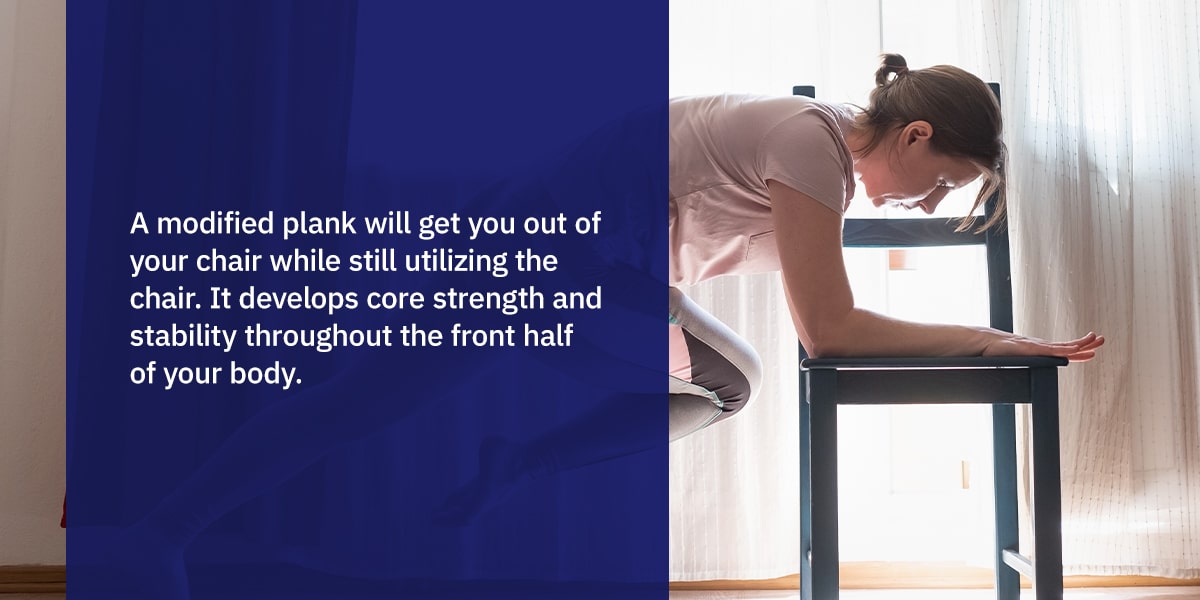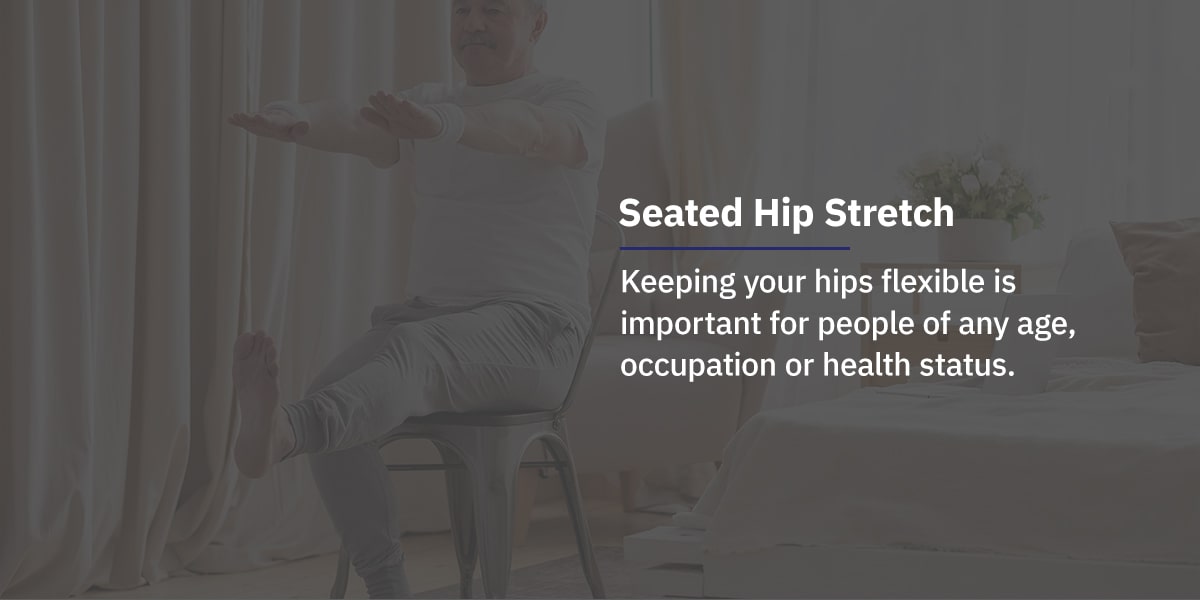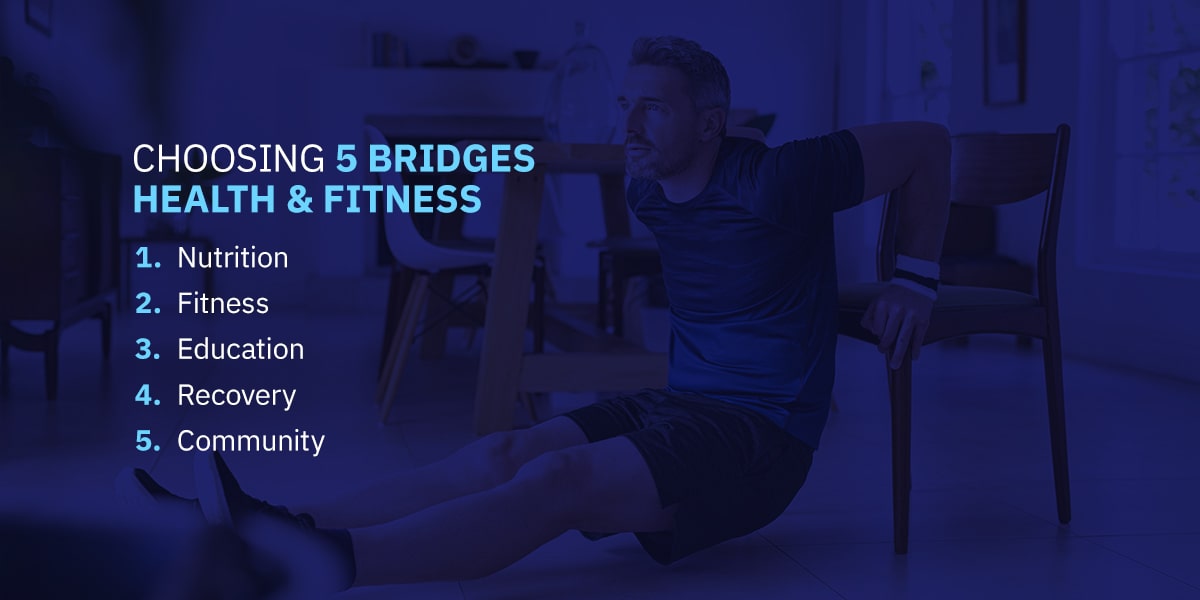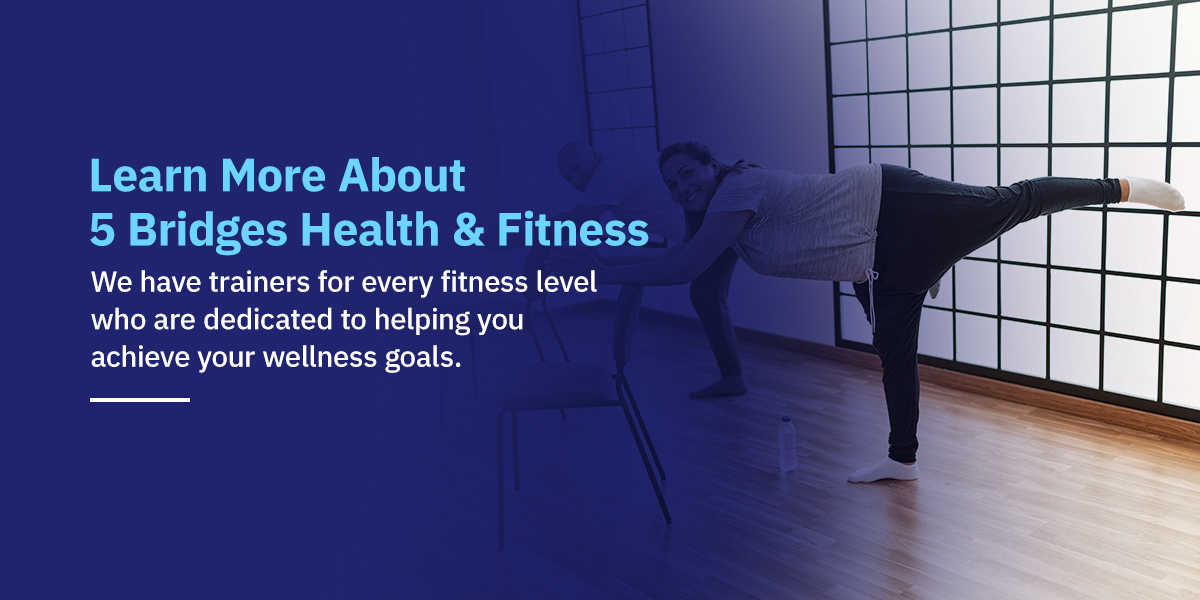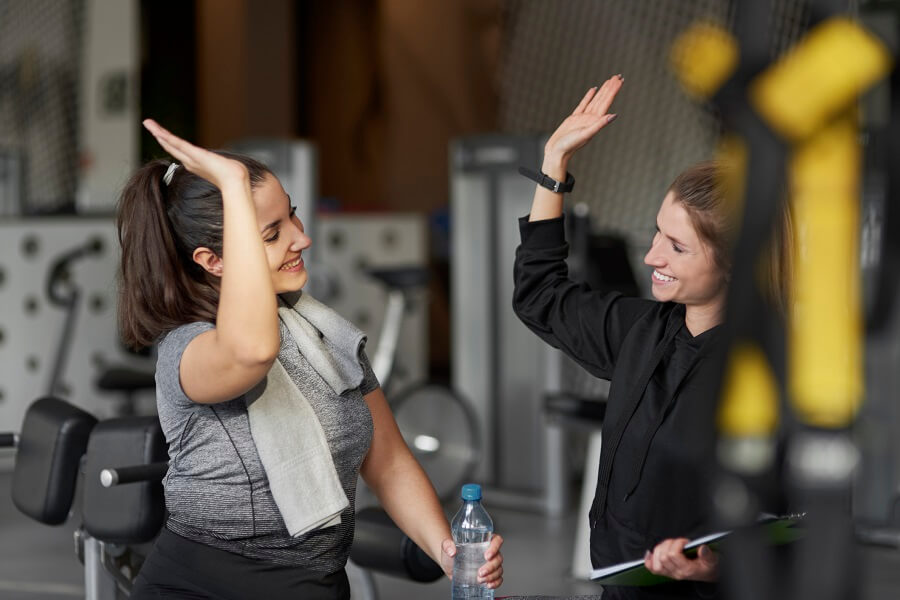Fitness - A Guide to Chair Exercises
Fitness – A Guide to Chair Exercises
Posted on: August 8, 2023 in ExercisesGeneral advice on improving your health often begins and ends with exercise. However, such advice does not always consider the limitations people experience when trying to accommodate more fitness activities. Such advice is often well-meaning but not very practical for older adults or those dealing with mobility issues.
For many seniors and individuals with decreased mobility, chair exercises are a solution to this problem. With this guide to chair exercises, we provide practical insight into how you can continue exercising and improving your health with convenient fitness solutions, whatever your situation may be.
What Are Chair Exercises?
Chair exercises are activities you can perform while sitting in a wheelchair, desk chair, couch or any ordinary chair. You don’t need a specialized chair to perform chair exercises. As such, these fitness activities provide an excellent opportunity for individuals with restricted mobility to stay fit and healthy. Chair exercises can include anything from a total body workout to chair aerobics or stretching exercises.
Who Can Benefit From Chair Exercises?
Anyone can benefit from chair exercises. However, they are ideal if you deal with limited mobility, have concerns about falls, or are recovering from an injury. With that in mind, some individuals who can see chair workout benefits include:
- Older adults.
- Individuals dealing with obesity.
- Post-surgery patients.
- Individuals dealing with back, foot or leg injuries.
- People who use wheelchairs.
- Individuals dealing with respiratory conditions like asthma or chronic obstructive pulmonary disease (COPD).
- People with vertigo or other conditions affecting balance.
- Office workers looking for time-efficient ways to exercise without losing productivity
If you identify with any of the above groups, you may benefit from chair exercises. You can add these activities to more mobile fitness routines or plan your training around chair exercises exclusively.
Overall Benefits of Chair Exercises
Chair exercises offer numerous benefits to older adults and others with restricted mobility. These advantages range from increased strength to reduced risk of injury. Here are some examples of chair exercise benefits.
Increased Flexibility and Mobility
If you deal with limited mobility, maintaining flexibility in your joints and muscles is an ongoing imperative. Like an oiled machine, our joints and muscles depend on concentrated movement to stay loose and lubricated. However, that can create a dilemma for individuals with restricted mobility — how do you maintain flexibility if you have limited movement?
For many people, seated exercises strike a workable balance between staying mobile and not straining their bodies. Furthermore, your range of motion tends to increase the more you exercise. In this way, chair exercises build up your flexibility and mobility in manageable ways suited to your fitness level.
Decreased Falling Risks
Whether you deal with vertigo, have brittle bones from osteoporosis or have general falling concerns, chair exercises offer solid support. As long as you use a sturdy chair and perform the moves correctly, chair exercise substantially reduces your falling risk.
Improved Balance, Gait and Posture
Many chair exercises focus on improving your balance, gait and posture. As many individuals’ main reason for exercising while sitting is reducing falling risks, balance and gait — your walking patterns — are often areas of concern. With chair exercises focusing on balance, gait and posture, you can improve upon those areas while supporting any vulnerabilities you feel with them.
Reduced Joint Pain and Stiffness
With increased flexibility and mobility also comes reduced joint pain and stiffness. Joint pain and stiffness are huge reasons for avoiding exercise, and understandably so. Although you sometimes have to experience the pain to improve the pain, you can also take steps to minimize your discomfort as you exercise. Chair stretching and other low-impact activities are excellent ways of doing so.
Better Blood Circulation
Regular exercise is one of the best things for your circulation, and a lack of exercise is one of the leading causes of poor blood circulation. Even simple activities like wrist or ankle rolls can improve circulation. As such, you do not need to run marathons to care for your heart. You can do so in any position — sitting, standing, running, or walking.
Added Muscle Strength
Various strength exercises occur from a seated position, like lifting weights or doing a seated shoulder press. As such, you can easily build muscle strength with multiple types of chair exercises!
Greater Concentration Levels
Exercise fuels your concentration levels, memory health and overall thinking skills, and chair exercise is no different. If you have ever had a post-workout high and proceeded to read a book like a computer or produced record productivity levels at work, you have experienced this fuel firsthand. Even if you just feel refreshed and ready for the day after exercising, you’ve experienced the tangible benefits of exercise on your focus and thought-processing ability.
Boosted Mood and Reduced Anxiety
The positive impact of exercise on mood and anxiety has been thoroughly researched and well-documented. However, since exercising can cause pain and discomfort for individuals with mobility issues, many get discouraged and avoid physical activity. This inactivity can negatively impact your mental well-being. For this reason, chair exercises offer an effective solution to exercising and caring for your mental health.
Improved Respiratory Health
By performing breathing practices or seated cardio exercises, you can improve your respiratory health. This benefit is especially important for individuals with conditions like asthma or COPD who may experience flare-ups with routine exercise.
Are Chair Exercises Effective?
Yes, chair exercises are effective despite their perceived limitations. By simply using weights or exercise bands, you can burn over 120 calories in just 30 minutes. Chair exercises are a great way to incorporate low-impact exercise into your existing routine.
20 Important Chair Exercises
Although chair exercises may seem limited in what they can accommodate, it may surprise you to learn the range of activities you can perform while sitting on a chair! Whether you are looking for strength exercises for seniors or leg exercises for individuals with limited mobility, you can find activities suited to any need.
Here are 20 essential chair exercises to incorporate into your fitness routine, including strength, leg, core and stretching exercises. Unless otherwise indicated, the proper form for seated exercise is to:
- Sit tall with your spine straight.
- Firmly plant your feet on the floor.
- Move your hips and back against the chair.
- Tighten your core and stick your chest out.
1. Seated Shoulder Press
A seated shoulder press builds shoulder strength and flexibility as it takes your shoulders through their full range of motion. The steps for this exercise are:
- Position the resistance band underneath your butt or chair, if using.
- Sitting tall in your chair, grip the dumbbells or resistance band with your palms facing forward.
- Lift your arms and bend your elbows so they are horizontal to your shoulders.
- Fully extend your arms — or as much as you find comfortable.
- Lower your arms slowly while keeping form in the elbows and repeat the steps.
2. Seated Chest Press
A chest press strengthens your chest, shoulder and tricep muscles all at once. The steps to perform a seated chest press include:
- If using a resistance band, position it behind the chair or your back at shoulder-blade height.
- Sit upright in the chair and grip the dumbbells or resistance band with your palms down.
- With your elbows bent and parallel to your shoulders, extend your arms forward.
- Slowly lower your arms back to the starting position and repeat.
3. Lateral Raises
Lateral raises work your shoulder and tricep muscles. For seated lateral raises, follow these steps:
- Place your resistance band under your chair or butt, if using them.
- Sit up straight and hold the dumbbells or resistance band at your sides.
- With your elbows bent slightly and your wrists straight, lift and extend your arms to the side.
- Slowly lower your arms to their starting position and repeat.
4. Bicep Curls
Of all our arm muscles, we use our biceps the most, and bicep curls keep them toned and muscular. Perform them with these steps:
- Place the resistance band under your chair or butt, if using them.
- Sit comfortably and hold the dumbbells or resistance band at your side with your palms up.
- Keep your elbows tucked to your sides and move both forearms in upward curling motions.
- Lower your arms slowly and repeat.
5. Band Pull-Apart
To prevent a rounded back, band pull-apart exercises keep your chest open and back strong. Here’s how to perform them:
- Sitting comfortably in your chair, hold a small resistance band in front of you with both hands.
- Draw your elbows out and stretch out the band.
- Squeeze your shoulder blades together as you pull the band.
- Return your arms to their starting position slowly and repeat.
6. Leg Extensions
Leg extensions strengthen your quads, or thigh muscles. Here’s how to perform them:
- Flex your right foot and squeeze your quads to straighten and lift your right leg.
- Bend your leg at the knees until your foot lightly touches the floor.
- Complete 20 reps, then switch to the other leg and repeat.
For a challenge, you can also add ankle weights if leg extensions are too easy for you.
7. Inner Thigh Squeezes
Inner thigh squeezes tone the adductor muscles from your groin to mid-thighs. To perform this exercise, you will need an exercise ball. Here are the steps:
- Sitting with your back straight, hips and back against the chair, place an exercise ball between your legs.
- Squeeze the exercise ball with your thighs and release slightly — but not the whole way.
- Complete 16 reps.
8. Outer Thigh Toe Taps
Outer thigh toe taps work on your hamstrings, which connect your hip with your knee. They also require a resistance band. The steps to complete outer thigh toe taps include:
- Sitting in your chair comfortably with good posture, wrap a resistance band around your mid-thighs.
- Move the right foot out and slightly tap the floor with your toes, then slowly bring it back and do the same with the other foot.
- Repeat for 16 reps.
9. Sit-And-Stands
Sit-and-stands have a direct practical application — strengthening the muscles you use when standing from a seated position. You can perform them with your body weight alone or while carrying an object for added weight. Here’s how you do them:
- Sit comfortably at the edge of your seat with your back straight and feet planted on the floor shoulder-width apart.
- Tighten your core and tip forward from the hips with as little assistance from your hands as possible.
- Press your weight into your feet and push yourself to a standing position with knees and hips fully extended.
- Reverse the movement to sit back down in the chair and repeat.
If you are unable to stand fully with this exercise, shift your weight forward and lift your glutes an inch or two, holding for a couple seconds, before sitting back down.
10. Single Leg Calf Raises
Calf raises improve your lower legs’ durability and strength. Follow these steps:
- Sitting tall and facing forward, tighten your core muscles and plant your feet firmly on the floor.
- With one foot, lift your heel as high as possible while keeping your toes on the floor.
- Repeat 10 reps, then switch to the other foot for 10 reps.
- Complete three sets with each leg.
11. Seated Tummy Twists
Tummy twists engage the core while improving spinal mobility. Here’s how to perform them:
- Sit straight with your feet flat on the ground.
- Position your hands behind your head with your elbows bent and pointed outward.
- Steady your pelvis, exhale and twist your torso as far to the right as possible.
- Inhale and return to center.
- Exhale and twist your torso to the left as far as possible.
- Inhale and return to center.
- Repeat six to eight reps, rest and complete another set.
12. Seated Hip Marches
Hip marches improve hip flexibility and mobility. The steps to perform them include:
- Sit tall with your feet hip-width apart and flat on the ground.
- Grip the edges of the chair with both hands and tighten your core.
- Lift your right leg as high as you can, keeping it bent at the knee.
- Lower your right foot slowly and lift your other leg.
- Complete 20 reps in two or three sets.
13. Seated Knee-To-Chest
A seated knee-to-chest mimics the actions of a classic sit-up in many ways. Here are the steps:
- Sit comfortably on a sturdy chair.
- Grip the sides of the chair to stabilize yourself and the chair.
- Position your feet far out with toes pointed to the ceiling.
- Raise one or both legs until the knees get as close to your chest as possible.
- Slowly lower your legs back to the starting position.
- Complete two to three sets of 10 reps.
14. Leg Kicks
Leg kicks improve general core strength. The steps include:
- Sit tall with your feet flat and tighten your core while gripping the sides of the chair.
- With your feet and legs together, lift both legs as high as you can.
- Hold for five seconds.
- Repeat three to five sets of 10 to 12 reps.
15. Modified Planks
A modified plank will get you out of your chair while still utilizing the chair. It develops core strength and stability throughout the front half of your body. Here’s how to do one:
- Put a chair against a wall.
- Place your hands on the seat or chair back.
- Tighten your core and step your feet backward until your body forms a straight diagonal line from your feet to your head with fully extended arms.
- Hold for 10 seconds to one minute.
- Return to a standing position and complete three sets.
16. Seated Backbend Stretch
This stretch helps ease tight muscles in your lower back, neck and chest. It involves the following steps:
- Sitting tall at the chair’s edge with your feet flat against the floor, place your hands on your hips.
- Arch your back inward, push your stomach outward and lean backward with your upper body.
- Continue extending your back until you’ve reached a comfortable stretch.
- Hold for 10 to 20 seconds, then release and return to your initial position.
- Repeat three to five times.
17. Seated Side Stretch
A seated side stretch activates your oblique muscles. Follow these steps to perform this stretch:
- Sit at the chair’s edge with your feet flat on the floor and your spine straight.
- Grip the right side of the chair with your right hand.
- Extend the left hand above your head to form a spoon-like shape.
- Slowly twist your upper torso to the right.
- Hold for 10 to 20 seconds, then release and switch sides.
- Repeat three to five times.
18. Seated Hip Stretch
Keeping your hips flexible is important for people of any age, occupation or health status. Here are the steps for performing a seated hip stretch:
- Sitting tall with your back against the chair, cross one leg on top of the other.
- Lift one foot so it rests on the other thigh.
- Slowly lean forward, keeping your spine straight and core tight, until you feel resistance in your glutes or hips.
- Hold for 10 to 20 seconds, then release and switch sides.
- Repeat three to five times.
19. Neck Stretch
We all experience tight neck muscles now and again. Loosen those muscles by following these neck stretch steps:
- Sitting tall and looking straight ahead, gently push your left shoulder down with your right hand.
- Slowly tilt your head to the right with your left shoulder down.
- Hold for five seconds.
- Repeat on the opposite side.
- Complete three sets.
20. Upper Body Twist
This stretch helps maintain upper back flexibility. Here’s how to do it:
- Sitting upright with your feet flat on the floor, cross your arms and lay your hands on your shoulders.
- Turn your upper body to the right as far as possible and hold for five seconds.
- Repeat on the other side.
- Complete five sets.
Choosing 5 Bridges Health & Fitness
With 5 Bridges Health & Fitness, you will receive high-quality guidance on the best exercise tactics for your age and condition. Like the 5 bridges that link Harrisburg, Pennsylvania, across the Susquehanna river, we have identified five bridges to a healthy lifestyle:
- Nutrition
- Fitness
- Education
- Recovery
- Community
Our personal trainers will work with you on a one-on-one basis to develop a program that upholds each of those bridges so you can live your healthiest life. To develop each individualized program, we provide a fitness consultation using a 3D body scanner, guidelines from consultation health journals and Functional Movement Screening (FMS). The results from this consultation will help our personal trainers provide you with optimized fitness routines.
We also offer various group fitness classes focusing on yoga, Zumba®, cardio and senior exercises.
Learn More About 5 Bridges Health & Fitness
5 Bridges Health & Fitness exists to help you find meaningful, lasting wellness. Since putting down our roots in 2010, we have been proud to call Harrisburg, Pennsylvania, our home. Learn more about 5 Bridges Health & Fitness and our personalized fitness routines! We have trainers for every fitness level who are dedicated to helping you achieve your wellness goals.


